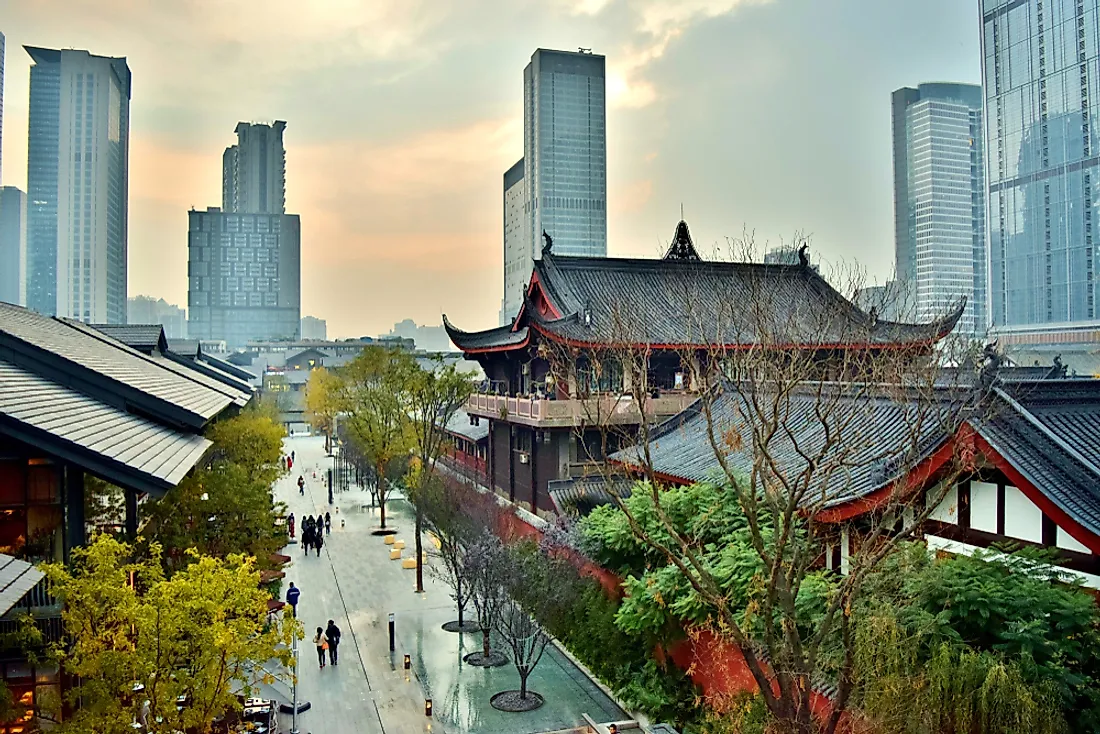Chengdu – The Capital Of Sichuan Province

Sichuan is a province in southwestern China that occupies the eastern parts of the Tibetan Plateau, Yungui Plateau, Dada Mountains, and the Sichuan Basin. Sichuan occupies an area of 187,000 sq mi and has a population of more than 81 million, ranking as the fifth most extensive and fourth most populous province in China. The region encompasses the former territory of two Ancient Chinese States, Shu and Ba, and is now divided into three autonomous prefectures and 18 prefecture-level cities. The province also has two geographically distinct regions: western Sichuan, which is composed of various mountain ranges; and eastern Sichuan, which features the fertile soils of the Sichuan basin.
Capital of Sichuan
Chengdu is the capital and the most populous city in Sichuan Province. Established by the ancient state of Shu, the city's name and location have not changed throughout its history, which include imperial, republican and communist eras. Chengdu served as the capital of the Shu Han state and various kingdoms during the Middle Ages, and is now one of the key cultural, financial, economic, communications, and transportation centers in Western China. Chengdu has direct jurisdiction over five counties, five county-level cities, and eleven districts.
Geography of Chengdu
Chengdu is situated on the vast Chengdu Plain, which has an elevation that ranges between 1,480 ft and 2,360 ft. The city is bordered by the Qionglai Mountains to the west and the steep Longmen Mountains to the northwest. The western mountainous region features a large forest that includes a panda habitat and other biological resources. The city is located on the westernmost edge of the Sichuan Basin, while the Penzhong Hills and Longquan Mountains are located east of Chengdu. The urban region of the city features numerous rivers including the Sha, Fu, and Jin. The highest point of the urban area, the Qionglai Mountains, have an elevation of 17,598 ft, while the lowest point, Jintang County, has an elevation of 1,240 ft. The city has been referred to as "the Abundant Land" due to its favorable climate, fertile soil, and the Dujiangyan Irrigation System.
Climate of Chengdu
Chengdu experiences a humid subtropical climate that is influenced by monsoons. The city is fairly warm throughout the year and has high relative humidity. Chengdu has four distinct seasons, and moderate rain is concentrated in the warmest months. Snow in Chengdu is rare, but the city often experiences small periods of frosts during the winter. Summers are humid and hot, but less severe than in Nanjing, Wuhan, and Chongqing, which are nicknamed the "Three Furnaces." Spring in Chengdu is warmer and sunnier than autumn, and the city receives an average of 1,073 hours of bright sunshine each year, which is less than most cities in Northern Europe.
Demography of Chengdu
Chengdu is one of the most highly populated cities in Western China, with an estimated population of 14,047,625. The city’s population increased by 29.8% between 2005 (10,820,285) and 2010 (14,047,625). The surrounding metropolitan region had an estimated population of 18.1 people in 2010 according to the Organization for Economic Co-operation and Development (OECD).
Economy of Chengdu
The state council of China designated Chengdu as the country’s western center of technology, science, finance, commerce, communication, transportation, and logistics. Chengdu is also an important base for agriculture and manufacturing. More than 260 Fortune 500 companies had branches in the city by 2010, such as Electricite De France, Nippon Steel Corporation, and ANZ Bank. The primary industries in Chengdu include information technology, food, medicine, machinery, and automobiles.











